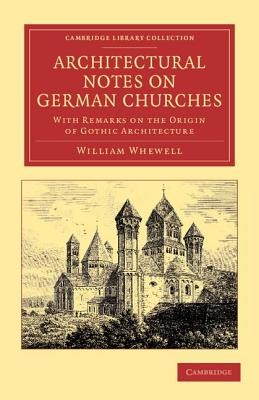
- We will send in 10–14 business days.
- Author: William Whewell
- Publisher: Cambridge University Press
- ISBN-10: 1108051766
- ISBN-13: 9781108051767
- Format: 14 x 21.6 x 0.8 cm, minkšti viršeliai
- Language: English
- SAVE -10% with code: EXTRA
Reviews
Description
A tutor of mathematics at Cambridge, William Whewell (1794-1866) mostly published on mechanics. He became professor of mineralogy in 1828, Knightbridge professor of moral philosophy in 1838, and master of Trinity College in 1841. This work is unusual among his writings for its focus on architecture, yet the emphasis placed on terminology is consistent with his other publications, such as An Essay on Mineralogical Classification and Nomenclature (1828). Architectural Notes is significant for offering a detailed theoretical analysis of the origins of Gothic architecture, especially of the mechanical principles underlying it, notably the pointed arch. The discussion of German churches, despite the book's title, is of secondary concern, although guidance is given for recording Gothic buildings. This first edition was published anonymously in 1830. The second (1835) and third (1842) editions bore Whewell's name and were partially revised to reflect recent research on the origin of the pointed arch.
EXTRA 10 % discount with code: EXTRA
The promotion ends in 21d.22:59:21
The discount code is valid when purchasing from 10 €. Discounts do not stack.
- Author: William Whewell
- Publisher: Cambridge University Press
- ISBN-10: 1108051766
- ISBN-13: 9781108051767
- Format: 14 x 21.6 x 0.8 cm, minkšti viršeliai
- Language: English English
A tutor of mathematics at Cambridge, William Whewell (1794-1866) mostly published on mechanics. He became professor of mineralogy in 1828, Knightbridge professor of moral philosophy in 1838, and master of Trinity College in 1841. This work is unusual among his writings for its focus on architecture, yet the emphasis placed on terminology is consistent with his other publications, such as An Essay on Mineralogical Classification and Nomenclature (1828). Architectural Notes is significant for offering a detailed theoretical analysis of the origins of Gothic architecture, especially of the mechanical principles underlying it, notably the pointed arch. The discussion of German churches, despite the book's title, is of secondary concern, although guidance is given for recording Gothic buildings. This first edition was published anonymously in 1830. The second (1835) and third (1842) editions bore Whewell's name and were partially revised to reflect recent research on the origin of the pointed arch.


Reviews